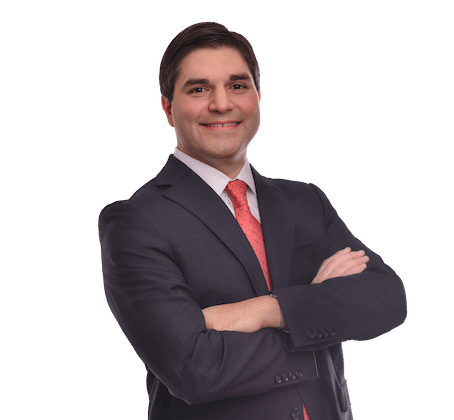The Small Business Administration (SBA) has released two new interim final rules providing additional guidance with respect to loan forgiveness and audits of loans under the Paycheck Protection Program (PPP). The SBA previously released the loan forgiveness application (available here) on May 17, 2020. Below are some observations on the application and new rules.
Loan Forgiveness
- General process: A borrower can apply to its lender for loan forgiveness based on its payroll costs, interest payments on existing mortgage obligations, rent and business utilities during the eight-week period following disbursement of loan proceeds (the “Covered Period”). The lender has 60 days from receipt of a complete application to issue a decision and, if applicable, a request for payment to the SBA. The SBA will then remit the applicable forgiveness amount plus accrued interest to the lender within 90 days of the lender’s decision and request for payment.
- Accounting for forgivable costs: In a win for borrowers, the forgiveness application and corresponding interim final rule provide that, in general, a borrower can take into account both costs paid during the Covered Period and costs incurred but not yet paid during the Covered Period, provided they are paid by the next regular payment date. This will be helpful to borrowers who were previously trying to decide between cash and accrual accounting for forgivable costs, and those who were contemplating accelerating payment dates, as this is generally now unnecessary.
- Payroll costs: A borrower may compute payroll costs (but only payroll costs and not other forgivable costs) based on an “Alternative Payroll Covered Period” running eight weeks from the first day of the borrower’s first full pay period after its loan disbursement date, in lieu of the regular Covered Period. Using an Alternative Payroll Covered Period may make the computations easier, but will likely prevent a borrower from taking advantage of the “paid or incurred” rule to include more than just 56 days of pay (subject to the $15,385 limitation described below) in its forgivable costs.
As for the health insurance, retirement and state and local tax components of payroll costs, the application instructions suggest that these are determined solely based on what gets paid during the Covered Period or Alternative Payroll Covered Period. With respect to healthcare costs, the instructions confirm that contributions to self-insured plans count towards payroll costs, to the extent in excess of any pre-tax or post-tax contributions by employees.
- Maximum compensation: The amount of employee cash compensation eligible for forgiveness is capped at $15,385 per employee – the eight week equivalent of $100,000 per year. For non-owner employees, there is no additional cap based on the employee’s historic wages. This means that bonuses and “hazard pay” given to employees during the COVID-19 pandemic may be forgivable. For business owners and self-employed individuals, however, the amount of their compensation eligible for forgiveness is capped at the lesser of $15,385 and the “eight-week equivalent” of their 2019 compensation, which is approximately 15.38% of 2019 compensation. Compensation paid to general partners in a partnership is capped at the amount obtained by multiplying a partner’s 2019 net earnings from self-employment (reduced by a claimed Section 179 expense deduction, unreimbursed partnership expenses and depletion from oil and gas properties) by 0.9235. Schedule C filers are capped by the amount of their owner compensation replacement, calculated based on 2019 net profit.
- Non-payroll costs: The “paid or incurred” rule extends to mortgage interest, rent and business utility payments, subject to a prohibition against obtaining forgiveness for prepayments of mortgage interest. “Business utility payments” are specifically defined to mean payments for electricity, gas, water, transportation, telephone and internet access, putting an end to speculation about what costs could be considered “utilities.”
The forgiveness application and corresponding interim final rule confirm the rule previously announced by the SBA that eligible non-payroll costs cannot exceed 25% of the total forgiveness amount. Specifically, a borrower’s maximum forgiveness amount (putting aside the reductions discussed below) is determined by dividing the amount of total eligible payroll costs by 0.75. This means that failing to spend 75% of the loan amount on payroll costs will reduce the amount of forgiveness but not render the borrower ineligible for forgiveness. Additionally, the amount of forgiveness is based on the amount the borrower spends on payroll, and not on the total amount borrowed or spent.
- Reductions in FTEs: The application requires a borrower to reduce its forgiveness amount based on any reduction in full-time equivalent employees (FTEs). To calculate FTEs, a borrower should enter the average number of hours paid to each employee per week, divide by 40 and then round the total to the nearest tenth. The maximum for each employee is capped at 1.0. In the alternative, a borrower can assign a 1.0 to each employee who works 40 hours or more per week and 0.5 to each employee who works fewer than 40 hours per week. This means that the SBA is viewing employees who regularly work 35 hours a week as part-time employees, which can have an impact on this calculation if any of those employees previously worked overtime but are not doing so during the Covered Period.
There are several circumstances in which a borrower will not be penalized for reductions to FTEs. First, a borrower is exempt from the loan forgiveness reduction if it reduced its FTEs during the period from February 15, 2020, through April 26, 2020, and subsequently restores its FTEs by no later than June 30, 2020. In connection with this, if the borrower makes a good-faith, written offer to rehire an employee on the same terms as before he/she was furloughed and such offer is rejected, that employee is treated as rehired for this purpose. The borrower must maintain records of such offer and rejection and must inform the applicable state unemployment insurance office of the rejected offer within 30 days. Second, a reduction in FTEs as a result of an employee’s termination for cause, voluntary resignation or voluntary reduction in hours will not reduce a borrower’s loan forgiveness.
- Reductions in wages: A reduction in an employee’s salary or wages in excess of 25% will generally result in a dollar-for-dollar reduction of loan forgiveness, absent an exception. This applies solely to employees earning an annualized equivalent of no more than $100,000 per year and is determined on a per-employee basis. A borrower does not need to take into account a reduction in an employee’s wages if such reduction corresponds to a reduction of hours that is reflected in the FTE calculation. Also, a reduction in salary or wages will not impact a borrower’s forgiveness if the reduction occurred between February 15, 2020, and April 26, 2020, and such reduction is eliminated by June 30, 2020.
- Documentation: The loan forgiveness application contains a detailed list of documentation that must be maintained by a borrower and presented to a lender in connection with the borrower’s forgiveness application. Borrowers should be aware of these requirements and should keep careful records.
SBA Audit Procedures
The SBA has the authority to review any PPP loan, and such review may include a review of a borrower’s eligibility for PPP funds, loan amounts and use of proceeds, and loan forgiveness amounts. In keeping with its prior announcement regarding audits of all PPP loans in excess of $2 million, the forgiveness application requires the borrower to check a box if it and its affiliates collectively borrowed more than $2 million through PPP.
- A borrower must retain PPP documentation for six years after the date on which its loan is forgiven or repaid in full, and must permit SBA representatives to access such documentation upon request.
- If the SBA determines a borrower is ineligible for a PPP loan, the borrower will not be eligible for forgiveness and the SBA will direct the lender to deny the forgiveness application. If the borrower is ineligible for the loan amount or forgiveness amount claimed, forgiveness can be denied “in whole or in part, as appropriate.” This indicates that a finding of ineligibility will not necessarily render the borrower ineligible for forgiveness on the entire amount of the loan.
- The SBA intends to issue a separate interim final rule addressing the appeal procedures for borrowers.
- If the SBA determines that a borrower is ineligible for a PPP loan, the lender will not be eligible for a loan processing fee. In addition, certain lender fees may be subject to clawback and the SBA may determine that a loan is not eligible for a guaranty if it determines that the lender has not satisfied all of its obligations.
Please contact Jason Navarino, Rich Lomuscio, Hannah Greendyk or any member of Riker Danzig’s Corporate and Tax Departments if you have questions about how this guidance applies to you.
Please
visit Riker Danzig’s COVID-19
Resource Center to stay up to date on all related legal issues.




